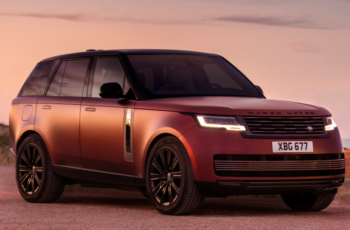Land Rover is still waiting for its electric vehicle. Jaguar, a sister company, introduced the I-Pace SUV several years ago. Land Rover is planning to produce many EVs, but Jaguar has already introduced its first electric vehicle. Land Rover will also produce EV versions for the Range Rover Evoque, Land Rover Discovery Sport, and Land Rover Discovery Sport.
2025 Range Rover Velar Review
Velar is a new SUV that was introduced for the 2018 model. It has been updated and added features but has remained mostly unchanged. Land Rover plans to convert its Halewood factory in Merseyside into the production facility for the electric Velar next year. Land Rover will be taking a big step forward with this.
The EV version of the Evoque, Discovery Sport, and Velar have been in the works for some time. However, there was no official announcement about the Velar’s fate until just recently. The sales have been disappointing and the shortage of chips hasn’t helped. Land Rover needs to change.
Powertrain
The new, fully-electric Velar will be built on a dedicated skateboard platform named EMA. Jaguar F-Pace will become a fully-electric SUV based on the EMA platform. The Jaguar F-Pace shares the D7 Architecture with the Velar. The new platform has a floor-mounted battery and an 800-volt architecture to allow for a super-quick charge. Land Rover must be able to compete with EVs from Audi and Porsche that can charge at 350kW.
Land Rover also works to increase the torque density of its EMA platform while increasing efficiency. The company claims that the target for efficiency is 4 to 4.5 miles/kWh, while also being “most torque-dense” in its class. The electric Velar is designed to be a champion off-roader. JLR has already shown off some of these capabilities in the I-Pace. But we can only imagine that it will be an industry leader when it comes down to its rugged design and strong performance.
Fuel Economy and Real-World MPG
The EPA rates the inline-six Velar engine at 20 mpg for city driving and 26 mpg on the highway. However, the turbocharged 4-cylinder engine is slightly more efficient with ratings of 21 mpg for city driving and 27 mpg on the highway. The four-cylinder Velar only achieved 26 mpg in our highway fuel-economy test at 75 mph. Visit the EPA website for more information on the Velar’s fuel efficiency.
Interior, Comfort, Cargo
Do you like modern architecture? The interior of the Velar is simple, with bold forms and horizontal lines. The materials are of high quality, and they’re used interestingly. Land Rover uses the customer’s preferred wood or metal in the area between the upper and the lower door panels. The aluminum trim on our test vehicle was a nice touch, but every Velar is beautifully detailed.
With its rear seats folded or up, the Velar’s boxy shape combined with the visually pleasing rear overhang (bodywork that extends beyond the rear wheels) allows it to fit more suitcases. With the seats folded, we could fit 23 carry-ons and 10 behind-the-back seats.
Connectivity and Infotainment
Land Rover’s Pivi Pro interface is run on a sleek 11.4-inch touchscreen that appears to float in front of the dashboard. Pivi Pro has a more intuitive interface and is faster than the InControl Touch Pro system of previous generations, but not without quirks. All models come with Bluetooth audio and phone connectivity, voice controls, a Meridian stereo, in-dash GPS navigation, and Apple CarPlay/Android Auto compatibility.
Safety and Driver Assistance Features
Land Rover offers the latest technologies in driver assistance on the Velar, including automated emergency braking (AEB), blind-spot detection, lane-keeping assistance, and adaptive cruise. Visit the websites of the National Highway Traffic Safety Administration and the Insurance Institute for Highway Safety to learn more about Velar’s crash test results. Safety features include:
- Standard automatic emergency braking system with pedestrian detection
- Lane-departure warning standard and lane-keeping assistance
- Adaptive cruise control available with steering assist







